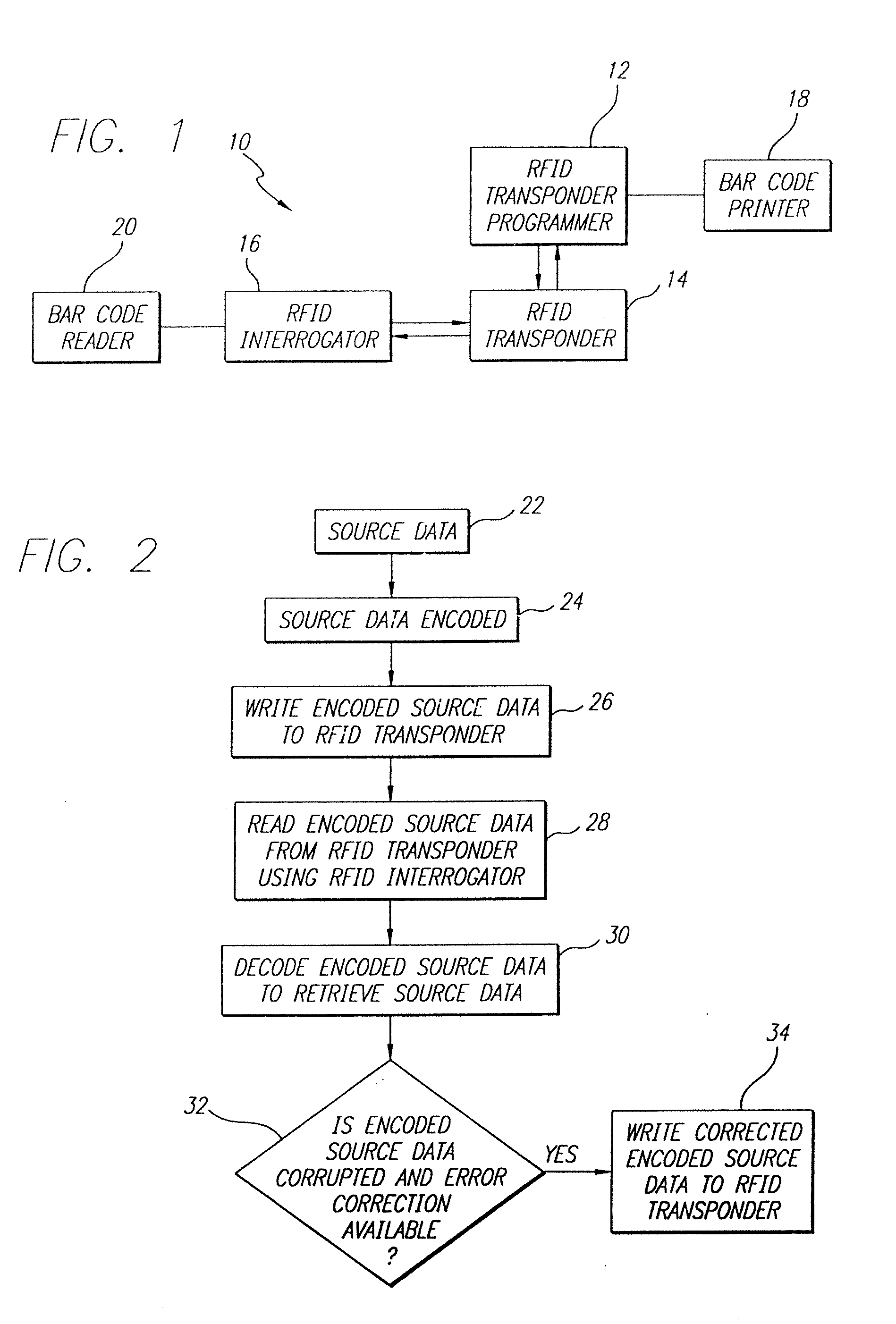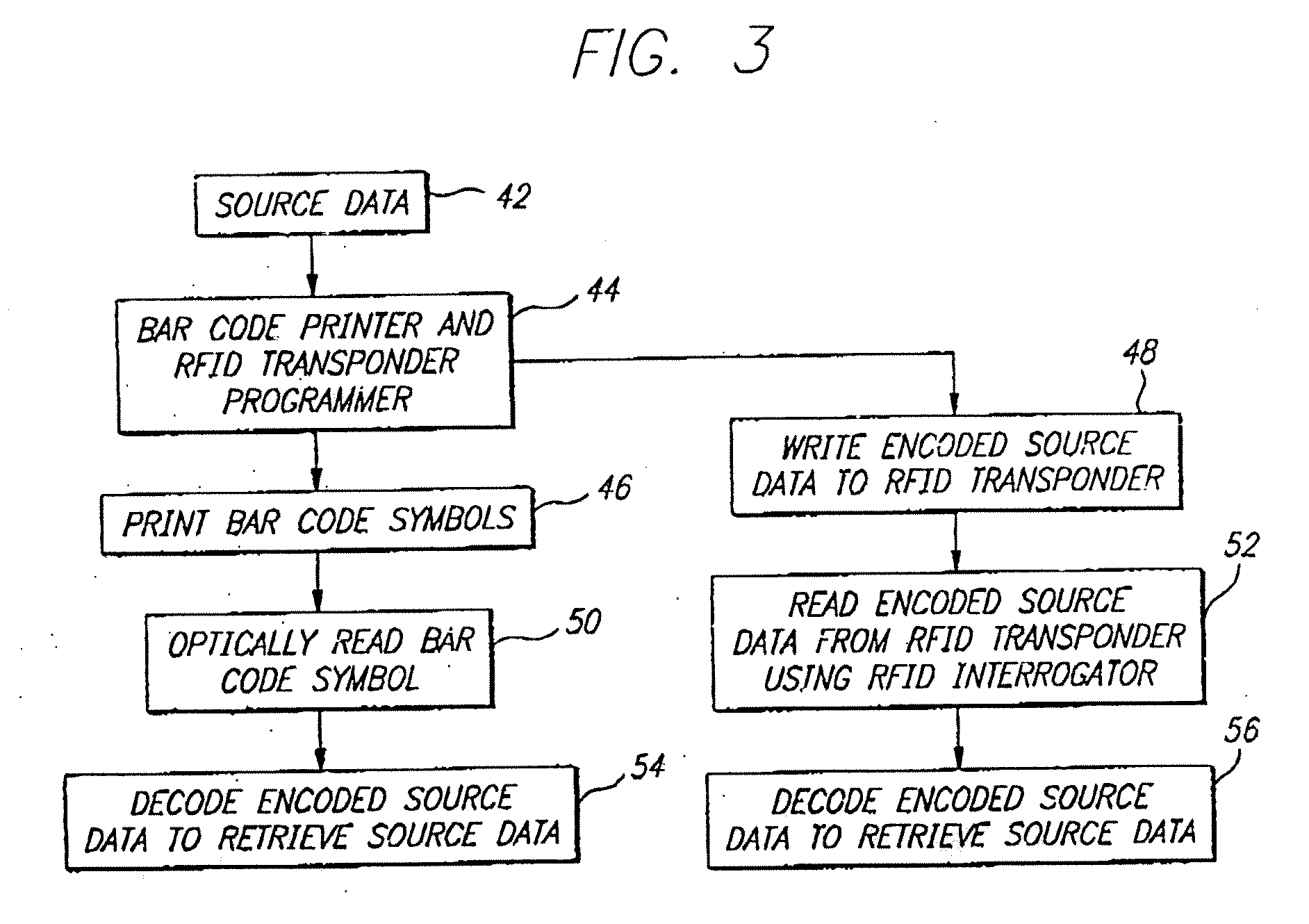Data encoding in radio frequency identification transponders
a radio frequency identification and transponder technology, applied in the field of rfid interrogators and transponders, can solve the problems of limited memory capacity of rfid transponders, no method of compacting variable data or adding functionality to encoded data, and achieve the effect of improving the performance of rfid systems
- Summary
- Abstract
- Description
- Claims
- Application Information
AI Technical Summary
Benefits of technology
Problems solved by technology
Method used
Image
Examples
Embodiment Construction
[0020] The present invention satisfies the need for a RFID system that provides RFID transponder data encoding for enhanced efficiency and for functionality such as error detection or correction. The efficient encodation capability would provide improved RFID system performance. The RFID system could be incorporated into a bar code reader having RFID interrogator / programming capabilities or a bar code printer having RFID transponder programming capabilities. Current encoding methods and error detection and correction codes from bar code symbology algorithms could then be adapted for use with RFID transponders, thereby reducing implementation costs and resulting in increased efficiencies and other cost savings. In the detailed description that follows, it should be appreciated that like reference numerals are used to identify like elements illustrated in one or more of the figures.
[0021] Referring first to FIG. 1, a block diagram of a RFID system 10 in accordance with an embodiment ...
PUM
 Login to View More
Login to View More Abstract
Description
Claims
Application Information
 Login to View More
Login to View More - R&D
- Intellectual Property
- Life Sciences
- Materials
- Tech Scout
- Unparalleled Data Quality
- Higher Quality Content
- 60% Fewer Hallucinations
Browse by: Latest US Patents, China's latest patents, Technical Efficacy Thesaurus, Application Domain, Technology Topic, Popular Technical Reports.
© 2025 PatSnap. All rights reserved.Legal|Privacy policy|Modern Slavery Act Transparency Statement|Sitemap|About US| Contact US: help@patsnap.com



